The Parker Solar Probe will have company on its next pass by the sun
Spacecraft will watch the sun from every angle while a NASA probe swoops in for a closer look
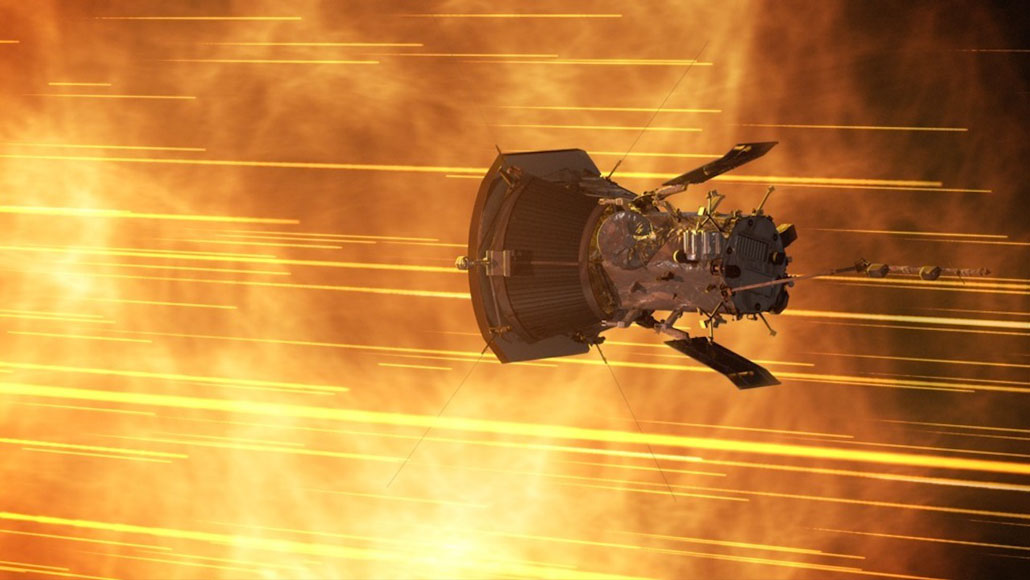
The Parker Solar Probe can taste the solar wind, shown in this illustration as straight lines streaming away from the sun. On its next close pass this month, the spacecraft won’t be alone.
NASA
- More than 2 years ago
The Parker Solar Probe is no stranger to the sun. On January 17, the NASA spacecraft will make its seventh close pass of our star, coming within 14 million kilometers of its scorching surface.
And this time, Parker will have plenty of company. A lucky celestial lineup means that dozens of other observatories will be trained on the sun at the same time. Together, these telescopes will provide unprecedented views of the sun, helping to solve some of the most enduring mysteries of our star.
“This next orbit is really an amazing one,” says mission project scientist Nour Raouafi of the Johns Hopkins Applied Physics Laboratory in Laurel, Md.
Chief among the spacecraft that will join the watch party is newcomer Solar Orbiter, which the European Space Agency launched in February 2020 (SN: 2/9/20). As Parker swings by our star this month, Solar Orbiter will be watching from the other side of the sun.
“This is partially luck,” solar physicist Timothy Horbury of Imperial College London said December 10 at a news briefing at the virtual meeting of the American Geophysical Union. “Nobody planned to have Parker Solar Probe and Solar Orbiter operating together; it’s just come out that way.”
Working together, the sungazers will tackle long-standing puzzles: how the sun creates and controls the solar wind, why solar activity changes over time and how to predict powerful solar outbursts.
“I think it genuinely is going to be a revolution,” Horbury said. “We’re all incredibly lucky to be doing this at this moment in time.”
Working in tandem
The Parker Solar Probe launched in 2018 and has already had six close encounters with the sun (SN: 7/5/18). During its nearly seven-year mission, the probe will eventually swing within 6 million kilometers of the sun — less than one-seventh the distance of Mercury from the sun — giving Parker’s heavily shielded instruments a better taste of the plasma and charged particles of the sun’s outer atmosphere, the corona (SN: 7/31/18).
Because Parker gets so close, its cameras cannot take direct pictures of the solar surface. Solar Orbiter, though, will get no closer than 42 million kilometers, letting it take the highest-resolution images of the sun ever. The mission’s official science phase won’t begin until November 2021, but the spacecraft has already snapped images revealing tiny “campfire” flares that might help heat the corona (SN: 7/16/20).
During Parker’s seventh close encounter, which runs January 12–23, Solar Orbiter will observe the sun from a vantage point almost opposite to Parker’s view. Half a dozen other observers will be watching as well, such as ESA’s BepiColombo spacecraft that is on its way to Mercury and NASA’s veteran sunwatcher STEREO-A. Both will flank Parker on either side of the sun. And telescopes on Earth will be watching from a vantage point about 135 million kilometers behind Parker, making a straight line from Earth to the spacecraft to the sun.
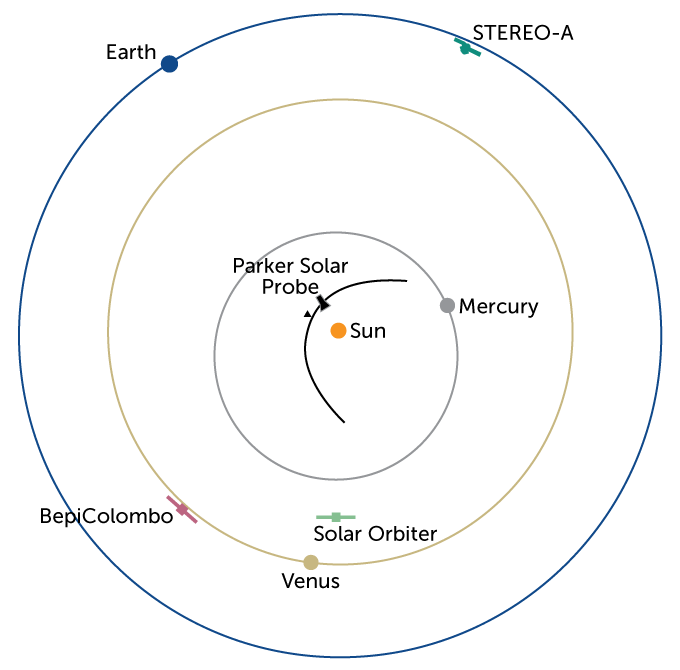
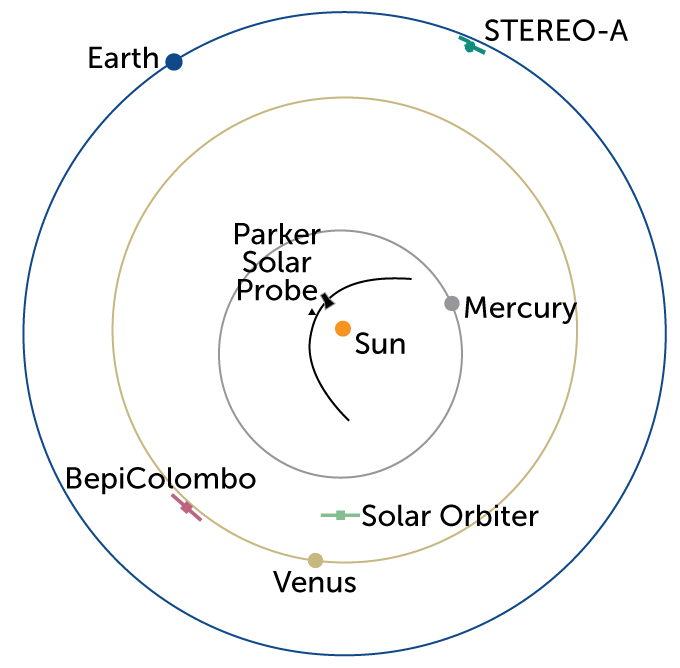
The situation is similar to Parker’s fourth flyby in January 2020, when nearly 50 observatories watched the sun in tandem with the probe, Raouafi says. Those observations led to a special issue of Astronomy & Astrophysics with more than 40 articles. One of the results was confirming that there is a region around the sun that is free of dust, which was predicted in 1929. “That was amazing,” Raouafi says. “We want to do a campaign that is that good or even better for this run.”
In the wind
At the AGU meeting, researchers presented new results from Parker’s second year of observations. The results deepen the mystery of magnetic kinks called “switchbacks” that Parker observed in the solar wind, a constant stream of charged particles flowing away from the sun (SN: 12/4/19), Raouafi says.
Some observations support the idea that the kinks originate at the base of the corona and are carried past Parker and beyond, like a wave traveling along a jump rope. Others suggest the switchbacks are created by turbulence within the solar wind itself.
Figuring out which idea is correct could help pinpoint how the sun produces the solar wind in the first place. “These [switchbacks] could be the key to explaining how the solar wind is heated and accelerated,” Raouafi said in a talk recorded for AGU.
Meanwhile, Solar Orbiter’s zoomed-in images plus simultaneous measurements of the solar wind may allow scientists to trace the wind’s energetic particles back to their birthplaces on the sun’s surface. Campfire flares — the “nanoflares” spotted by Solar Orbiter — might even explain the switchbacks, Horbury says.
“The goal is to connect tiny transient events like nanoflares to changes in the solar wind,” Horbury said in the news briefing.
Waking up with the sun
Parker and Solar Orbiter couldn’t have arrived at a better time. “The sun has been very quiet, in a deep solar minimum for the last several years,” Horbury said. “But the sun is just beginning to wake up now.”
Both spacecraft have seen solar activity building over the last year. During its sleepy period, the sun displays fewer sunspots and outbursts such as flares and coronal mass ejections, or CMEs. But as it wakes up, those signs of increasing magnetic activity become more common and more energetic.
On November 29, Parker observed the most powerful flare it had seen in the last three years, followed by a CME that ripped past the spacecraft at 1,400 kilometers per second.
“We got so much data from that,” Raouafi says. More CMEs should pass Parker when it’s even closer to the sun, which will tell scientists about how these outbursts are launched.
Solar Orbiter caught an outburst too. On April 19, a CME passed the spacecraft about 20 hours before its effects arrived at Earth. With existing spacecraft, observers on Earth get only about 40 minutes warning before a CME arrives.
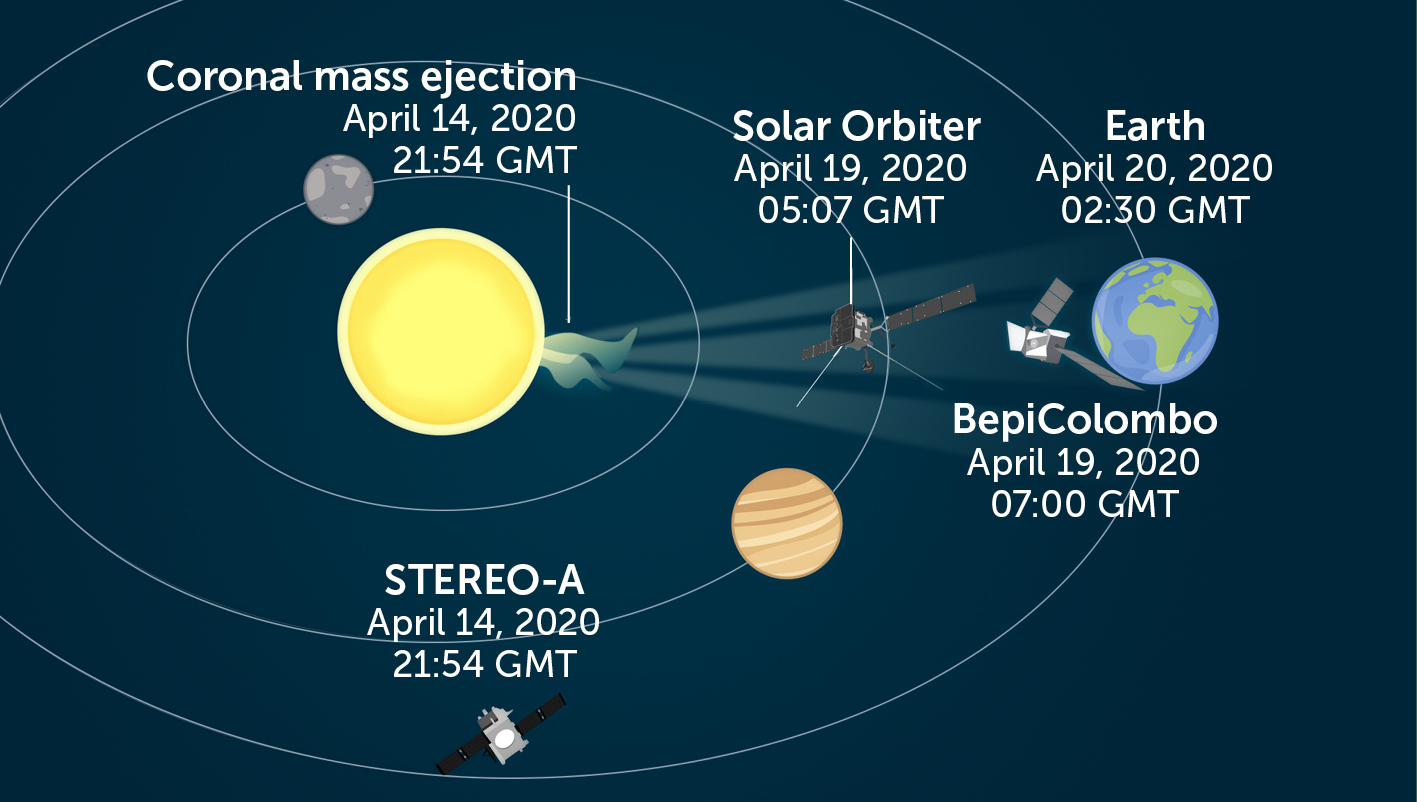
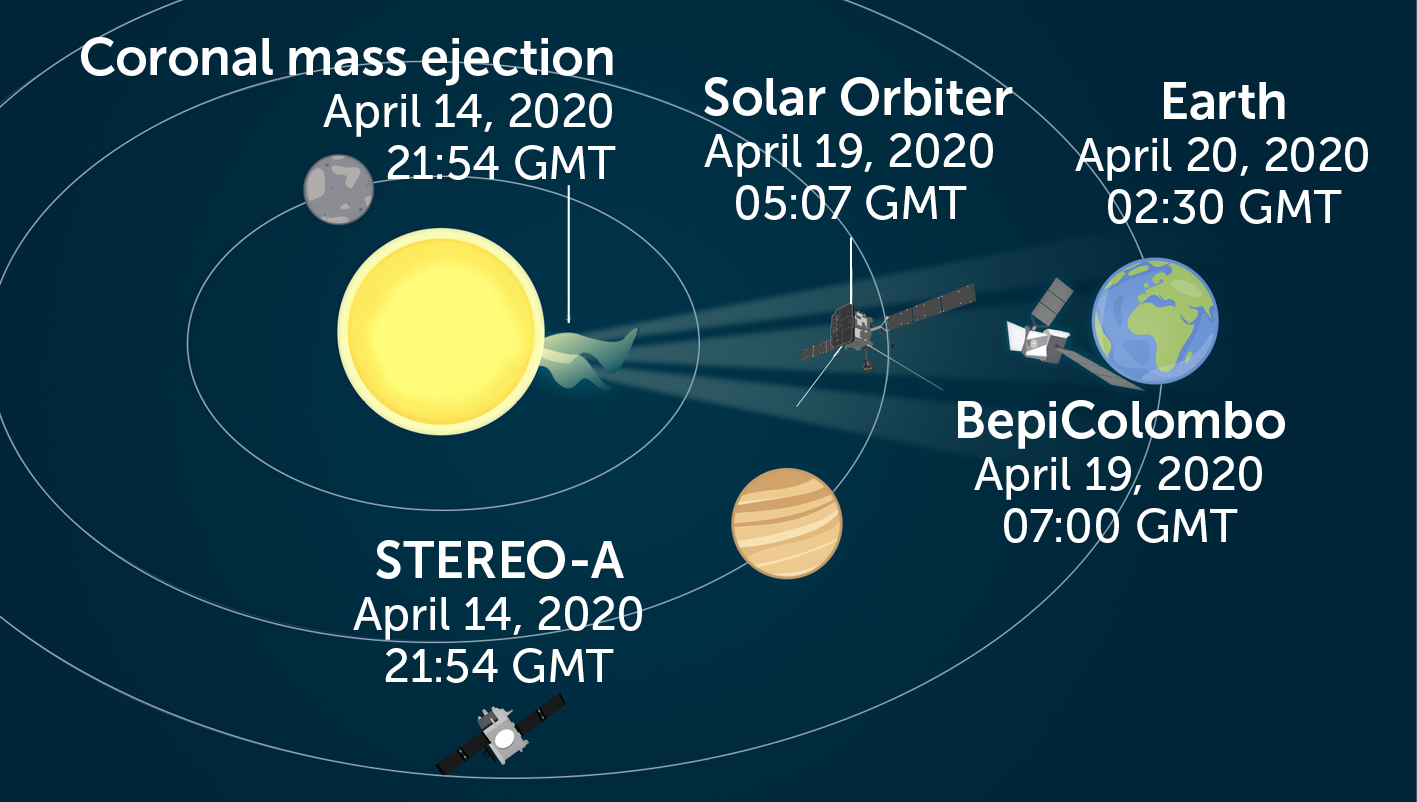
“We can see how that CME evolves as it travels away from the sun in a way we’ve never been able to do before,” Horbury said.
Strong CMEs can knock out satellites and power grids, so having as much forewarning as possible is important. A future spacecraft at Solar Orbiter’s distance from the sun could help give that warning.
Looking forward
This orbit is the first time that Parker Solar Probe and Solar Orbiter will watch the sun in tandem, but not the last. “There will be plenty of opportunities like this one,” Raouafi says.
He’s looking forward to one opportunity in particular: the solar eclipse of 2024. On April 8, 2024, a total eclipse will cross North America from Mexico to Newfoundland. Solar scientists plan to make observations from all along the path of totality, similar to how they watched the total eclipse of 2017.
During the eclipse, the Parker Solar Probe will be on its second-closest orbit, between 7 million and 8 million kilometers from the sun. Parker and Solar Orbiter will be “almost on top of each other,” Raouafi says — both spacecraft will be together off to one side of the sun as seen from Earth. Whatever prominences and other shapes in the corona are visible to observers on Earth will be headed right at the spacecraft.
“They will be flying through the structure we will see from Earth during the solar eclipse,” Raouafi says. The combined observations will tell scientists how features on the sun evolve with time.
“I think it is a new era,” Horbury said. “The next few years is going to be a step change in the way we see the sun.”







